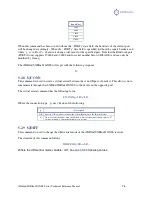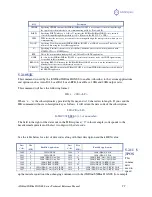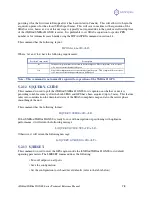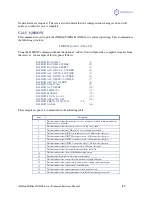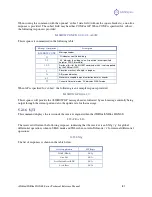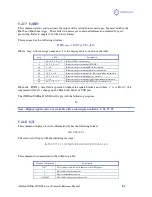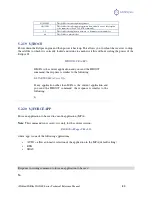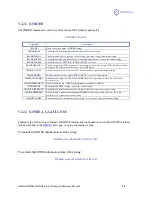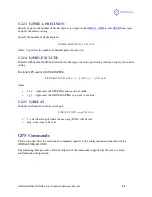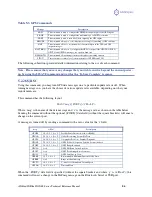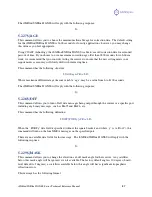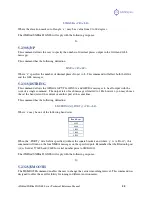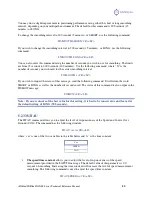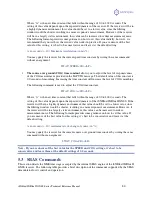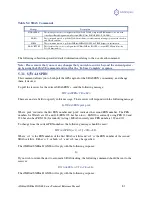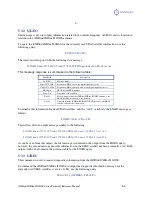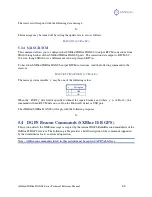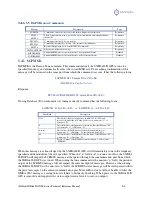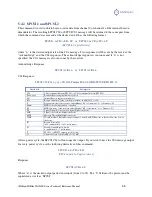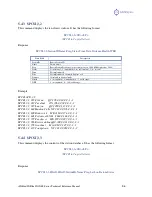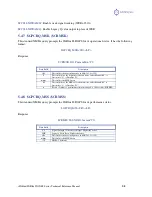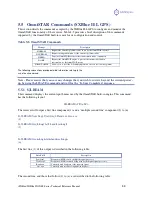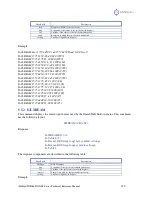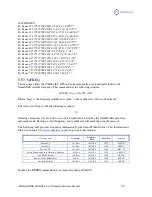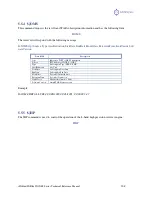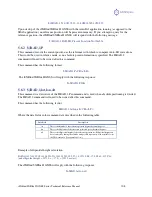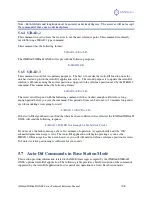
iSXblue/SXBlue II GNSS Series Technical Reference Manual
90
Where “tc” is the new time constant that falls within the range of 0.0 to 200.0 seconds. The
setting of this value depends upon the expected dynamics of the receiver. If the receiver will be in
a highly dynamic environment, this value should be set to a lower value, since the filtering
window would be shorter, resulting in a more responsive measurement. However, if the receiver
will be in a largely static environment, this value can be increased to reduce measurement noise.
The following formula provides some guidance on how to set this value initially, however, we
recommend that you test how the revised value works in practice. If you are unsure of the best
value for this setting, it is best to be conservative and leave it at the default setting.
tc (in seconds) = 10 / Maximum Acceleration (in m/s^2)
You may query the receiver for the current speed time constant by issuing the same command
without an argument:
$JTAU,SPEED<CR><LF>
•
The course over ground (COG) time constant
allows you to adjust the level of responsiveness
of the COG measurement provided in the $GPVTG message. The default value of this constant is
0.0 seconds of smoothing. Increasing the time constant will increase the level of COG smoothing.
The following command is used to adjust the COG time constant:
$JTAU,COG,tc<CR><LF>
Where “tc” is the new time constant that falls within the range of 0.0 to 200.0 seconds. The
setting of this value depends upon the expected dynamics of the iSXBlue/SXBlue II GNSS. If the
receiver will be in a highly dynamic environment, this value should be set to a lower value since
the filtering window would be shorter, resulting in a more responsive measurement. However, if
the receiver will be in a largely static environment, this value can be increased to reduce
measurement noise. The following formula provides some guidance on how to set this value. If
you are unsure of the best value for this setting, it’s best to be conservative and leave it at the
default setting.
tc (in seconds) = 10 / maximum rate of change of course (in °/s)
You may query the receiver for the current course over ground time constant by issuing the same
command without an argument:
$JTAU,COG<CR><LF>
Note - If you are unsure of the best value for the SPEED and COG settings, it’s best to be
conservative and leave them at the default settings of 0.0 seconds.
5.3
SBAS Commands
This section details the NMEA messages accepted by the internal SBAS engine of the iSXBlue/SXBlue II
GNSS receiver. The following table provides a brief description of the commands supported by the SBAS
demodulator for its control and operation.

